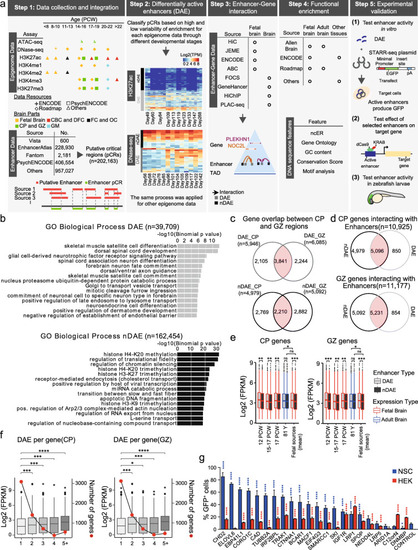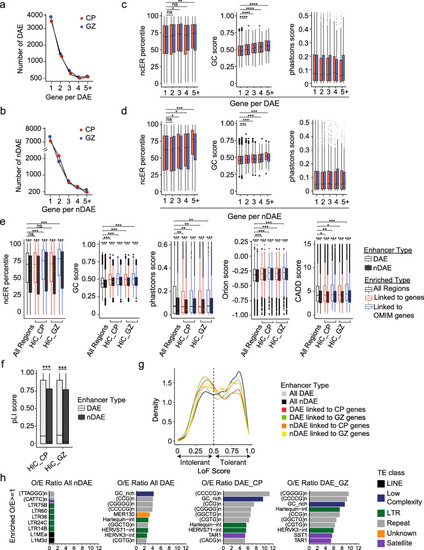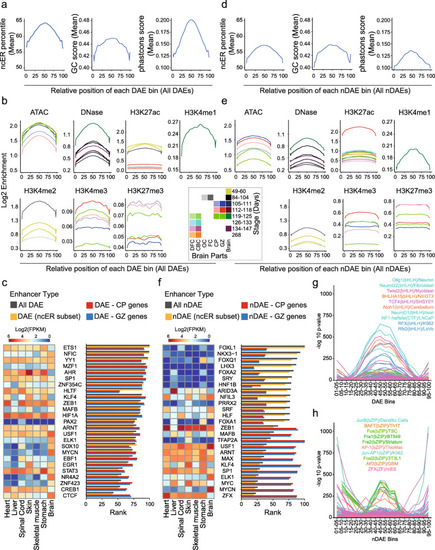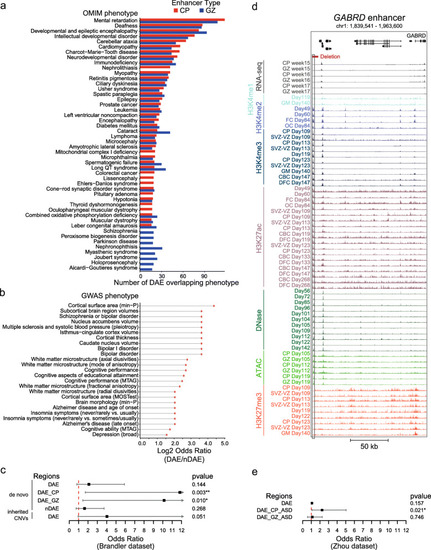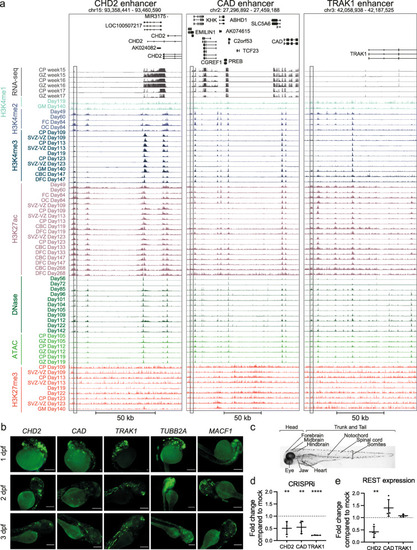- Title
-
Comprehensive multi-omics integration identifies differentially active enhancers during human brain development with clinical relevance
- Authors
- Yousefi, S., Deng, R., Lanko, K., Salsench, E.M., Nikoncuk, A., van der Linde, H.C., Perenthaler, E., van Ham, T.J., Mulugeta, E., Barakat, T.S.
- Source
- Full text @ Genome Med.
|
Integrative analysis of brain enhancers during fetal development. |
|
Distinct sequence characteristics between DAEs and nDAEs. |
|
DAEs and nDAEs are enriched for distinct transcription factor binding sites. A Line plot showing the distribution of the mean ncER percentile (left) [38], GC content score (middle) [39], and phastcons score (right) [39] over the relative bin position for all DAEs. B Line plot showing the log2 enrichment for various epigenome features as indicated, over the relative bin positions for all DAEs. Different colors indicate different time points of human brain development and different brain regions from which the data were obtained. DFC, dorsal frontal cortex; CBC, cerebellar cortex; OC, occipital cortex; FC, frontal cortex; CP, cortical plate; GZ, germinal zone; Brain, whole brain. Epigenome data used are summarized in Additional file 3: Table S2. C Bar chart showing the relative LOLA enrichment of TFs from JASPAR in all DAEs (light gray), in the central part of all DAEs (ncER subset, orange), in DAEs linked to genes in CP (red) and in DAEs linked to genes in GZ (blue). X-axis displays the rank score (a combination of p value, odds ratio from Fisher’s exact test, and the raw number of overlapping regions) from LOLA. The rank was re-scaled between 0 and 100, so that DAEs with a larger TFs enrichment have a higher rank. Also shown is a heatmap showing the RNA-seq expression levels (Log2 FPKM) of the same TFs across various human fetal tissues. RNA-seq data obtained from ENCODE project [7]. D As in A, but here for nDAEs. E As in B, but here for nDAEs. Note the difference in y-axis scale for H3K4me3 and H3K27me3 compared to panel B given the higher enrichment in nDAEs. F As in C, but now for nDAEs. G Line plot showing the distribution of enrichment (− log10 p value as determined by HOMER analysis) across the relative DAE bins, for the 251 TF motifs that were not equally enriched in all 20 bin groups. The most enriched TF motifs are indicated. H As G, but now for 218 TFs that were not equally enriched across the 20 bin groups of all nDAEs |
|
Clustering of DAEs unravels temporal dynamics of brain gene regulation. |
|
Variants in DAEs and nDAEs are associated with human disease. |
|
CRISPRi and zebrafish experiments validate activity of DAEs regulating genes involved in neurogenetic disorders. |

